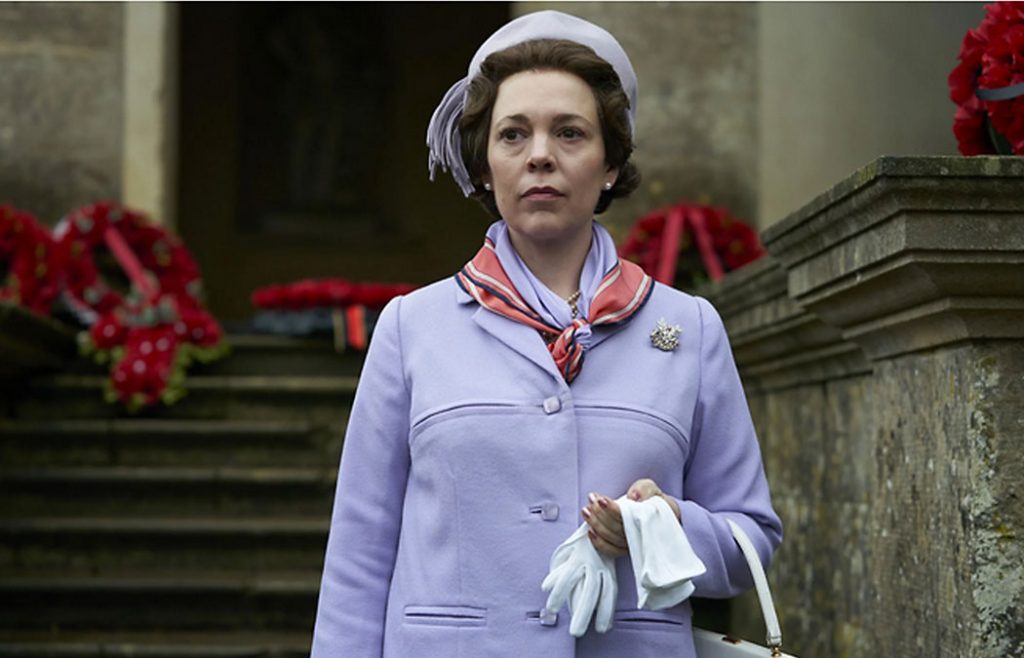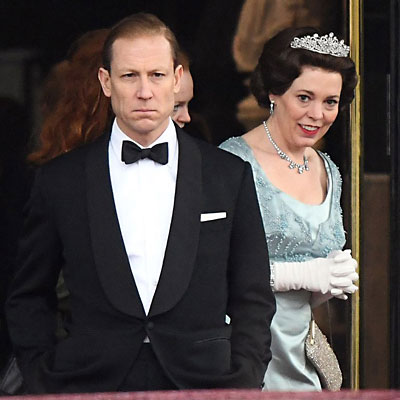
The Crown showcases Britain’s royal family and longest reigning monarch, Queen Elizabeth II, crowned in 1952 at age 25 and still going strong at 93. Stay with me. This Netflix series is dazzling with grandeur and teeming with insight, and it’s a masterpiece. Now in Season 3, The Crown captivates with a stunning cast and potent dialogue that explodes off the screen.
Season 1 opens in 1947 during the reign of King George VI (who was featured in the unforgettable film of 2010, The King’s Speech), the father of Princesses Elizabeth and Margaret, played by Jared Harris. For two glorious seasons that I’ll probably watch again, Claire Foy portrays Elizabeth with a brilliance and complexity that turned millions of viewers into binge-watchers. And Matt Smith captures the charm and adventurous spirit of her dashing husband, Prince Philip. But when the King dies unexpectedly and the throne is passed to Elizabeth, the weight of the crown transforms her into a stoic monarch consumed by her sense of duty. As Queen she must maintain a composed and unopinionated public persona. And always put the Crown first. But to meet this standard, the whole family pays a price.
Series creator Peter Morgan is a veteran writer of TV and films that include Frost/Nixon and The Queen. But he’s no royal insider. He draws his material from old records and news coverage excavated by his research team. He weaves true events into a continuum and improvises the details, according to Morgan, guided by a sense of responsibility. And The Crown is born, with a fascinating take on the life of the Windsors in Buckingham Palace. Morgan’s series poses the silent questions: What does it feel like to wear the Crown? To be a member of the royal family? To consider these questions, we follow the family’s journey.

We watch the optimism of the royals’ early years grow tainted by a stark reality: the palace is a golden prison. And survival requires an acceptance of self-suppression, a mechanical existence that squeezes the life out of being human. Royals must keep a stiff upper lip, but it doesn’t stop at the lip. It’s like strapping yourself into a full-body corset and holding your breath. For decades.
Each family member navigates the royal rules in their own way. In Season 3, the Queen, now played by Olivia Colman, has become a model of denial and restraint, who stores her personality in the cupboard. But sometimes she imagines the life she and Philip might have led if her father had lived longer. And Philip (Tobias Menzies) feels the weight, too. Frustrated by the throne that he’s forbidden to share, and by a life outside the palace he doesn’t live, the Prince’s joie de vivre has been dampened. He now exhibits a buttoned-down spirit with a rigid manner of speech.
And then there’s Margaret (Helena Bonham Carter), Elizabeth’s passionate and indulgent sister, who’s fond of dancing, smoking, drinking, and men. Margaret is consumed with disappointment. She always wanted to wear the Crown. And so does the young heir apparent, Prince Charles (Josh O’Connor), Elizabeth’s son. Charles wants to be a more contemporary and responsive monarch than his mother. But as he explains to his girlfriend Camilla (Emerald Fennell), until he wears the Crown he’ll never feel alive. Because palace life “is not so much an existence as a predicament.”
The Crown tracks the stories of life in the palace against the backdrop of British history unfolding. While the royals weather their own dramas, transgressions, and a few scandals that don’t stay in the closet for long, life beyond the palace faces challenges like the dangerous smog that consumes London, a crisis over the Suez Canal, Britain’s inflated economy that devalues the pound, a coal miner strike, power outages, and so on.
Prime ministers come and go with each election (beginning with Winston Churchill in Season 1, played by John Lithgow). And each PM engages in private weekly meetings with the Queen. The meetings that the Queen enjoys—like with Churchill or Wilson—reveal a quiet intimacy. But with PMs she doesn’t warm up to, the Queen ends her meetings abruptly, pushing the button that hails her staff, who usher the PM out of the palace.
The royals’ lavish lifestyle, complete with castles and country homes, a yacht, and a massive payroll, is funded by taxes, supporting a monarchy whose power was muted centuries ago by democratic rule. Which begs the question: what is the role of the Crown? The British say the monarch reigns but doesn’t rule. I didn’t say it would explain it. Try this. The government is the ruling body while the Crown is the head of the Church of England, a symbolic figure who serves her subjects in silence. The North Star in the galaxy of British life. (I’ll keep working on it.)
Beyond sovereignty, the Crown is a symbol of irony, choosing the people who don’t want it over those who yearn to wear it. Well, here’s a theory about royal destiny that surfaces in Season 3. Remember the former King Edward VIII? He wanted the Crown, but abdicated to marry divorcée Wallis Simpson, which passed the throne to his brother, Elizabeth’s father, King George VI. George never wanted to be king, yet he is remembered for his great kindness. So in his final days, Edward the abdicator shares his conclusion with his niece, Queen Elizabeth: “The Crown always finds its way to the right head.” And somehow, maybe he’s right. Rating: A
